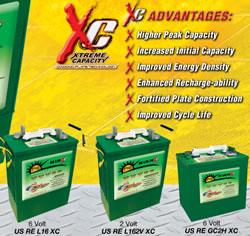Light-Powered Breakthrough Enables Precision Tuning of Quantum Dots
Researchers at North Carolina State University have demonstrated a new technique that uses light to tune the optical properties of quantum dots – making the process faster, more energy-efficient and environmentally sustainable – without compromising material quality.
Researchers at North Carolina State University have demonstrated a new technique that uses light to tune the optical properties of quantum dots - making the process faster, more energy-efficient and environmentally sustainable - without compromising material quality.
"The discovery of quantum dots earned the Nobel Prize in chemistry in 2023 because they are used in so many applications," says Milad Abolhasani, corresponding author of a paper on the work and ALCOA Professor of Chemical and Biomolecular Engineering at NC State. "We use them in LEDs, solar cells, displays, quantum technologies and so on. To tune their optical properties, you need to tune the bandgap of quantum dots - the minimum energy required to excite an electron from a bound state to a free-moving state - since this directly determines the color of light they emit.
"Existing methods for bandgap tuning of perovskite quantum dots rely on chemical modifications or high-temperature reactions, both of which are energy-intensive and can introduce inconsistencies in the final material properties," Abolhasani says.
"Our new approach uses light to drive the reaction, which requires less energy and allows us to be incredibly precise."
For this work, the researchers started out with green-emitting perovskite quantum dots and placed them in a solution containing either chlorine or iodine. This solution is then run through a microfluidic system that incorporates a light source.
The microfluidic environment enables precise reaction control by ensuring uniform light exposure across small solution volumes, approximately 10 microliters per reaction droplet. This is important because the small volume solution allows the light to penetrate the entire sample, and the resulting photochemical reactions take place very rapidly throughout the sample.
The light then triggers reactions that make the green-emitting perovskite quantum dots move closer to the blue end of the spectrum when chlorine is present in the solvent, and closer to the red end of the spectrum when iodine is present in the solvent.
"We can control the bandgap by controlling the amount of energy we introduce into the sample, and we control the amount of energy by controlling the light," Abolhasani says. "This allows us to tune the bandgap very precisely.
"And while we are processing small reaction volumes, the process itself happens very quickly, which means that you ultimately end up producing perovskite quantum dots with tuned bandgaps more efficiently than was possible with previous techniques," Abolhasani explains.
"This is a sustainable way to produce high-quality perovskite quantum dots using light. We're now in the process of scaling up to create perovskite quantum dots for use in optoelectronic devices."
The paper, "Photo-Induced Bandgap Engineering of Metal Halide Perovskite Quantum Dots in Flow," is published open access in the journal Advanced Materials. First author of the paper is Pragyan Jha, a Ph.D. student at NC State. The paper was co-authored by Nikolai Mukhin, Fernando Delgado-Licona, Emily Brown and Austin Pyrch, Ph.D. students at NC State; Arup Ghorai and Richard Canty, postdoctoral researchers at NC State; Hamed Morshedian, a former master's student at NC State; and Felix Castellano, Goodnight Innovation Distinguished Chair of Chemistry at NC State.
This work was done with support from NC State's Center for Accelerated Photocatalysis (CAPS), which was funded by the National Science Foundation's Centers for Chemical Innovation Program under grant 2420490. CAPS is part of NC State's Integrative Sciences Initiative. The work received additional support from NSF under grant 1940959 and the University of North Carolina Research Opportunities Initiative program.
Featured Product

U.S. BATTERY RENEWABLE ENERGY SERIES DEEP CYCLE BATTERIES
Our RE Series batteries are designed to provide the highest peak capacity, longest cycle life, and greatest reliability for use in industrial or residential renewable energy applications. Renewable Energy Series batteries utilize the company's exclusive XC2™ formulation and Diamond Plate Technology® to create the industry's most efficient battery plates, delivering greater watt-hours per liter and watt-hours per kilogram than any other flooded lead-acid battery in the market. Our Deep Cycle batteries are engineered to work with solar panels as well as other renewable energy applications.
